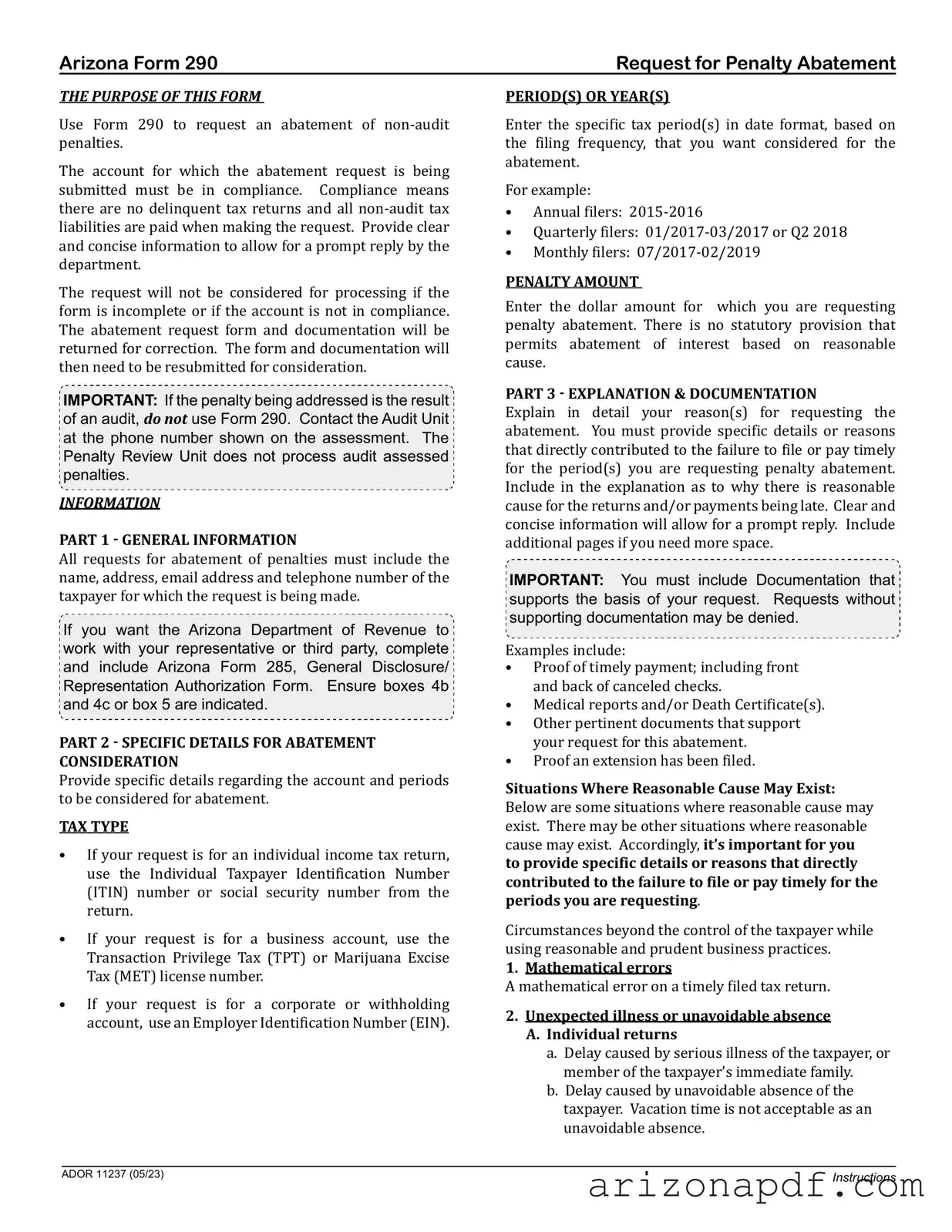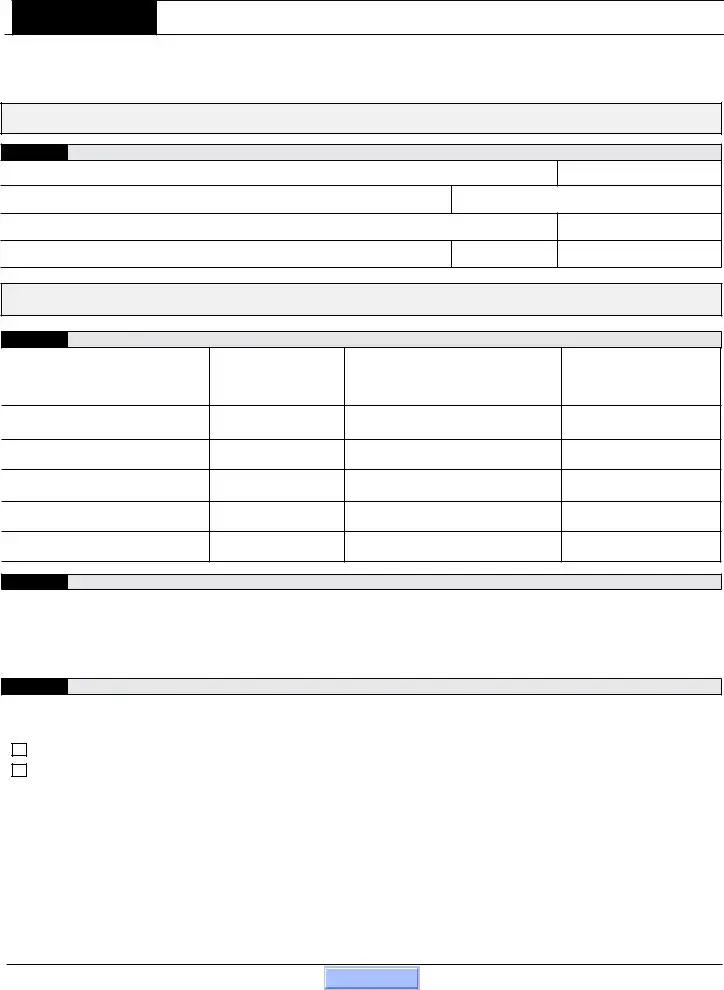What is Arizona Form 290?
Arizona Form 290, titled "Request for Penalty Abatement," is a document used to request the Arizona Department of Revenue to abate or forgive penalties associated with tax payments or filings. This form allows taxpayers to explain circumstances that led to delays or mistakes in their tax obligations, provided these were due to reasonable cause and not willful neglect.
Who can file Arizona Form 290?
Individuals, corporations, partnerships, estates, trusts, limited liability companies, and even governmental agencies can file Form 290, given they have penalties they wish to have abated and they meet the criteria set forth by the Arizona Department of Revenue. The key requirement is proving that the penalties were the result of reasonable cause.
What types of penalties can be abated using Form 290?
Form 290 can be used to request abatement for various non-audit tax penalties. This includes penalties from individual income tax, corporate income tax, transaction privilege and use tax, withholding tax, and other specified tax types. However, it is important to note that penalties resulting from audit assessments are not eligible to be addressed using Form 290 and require direct contact with the Audit Unit.
What information is required to complete Form 290?
When completing Form 290, taxpayers need to provide general information such as taxpayer names, contact numbers, addresses, and taxpayer identification numbers (SSN, ITIN, or EIN depending on the tax type). The specific tax period and penalty amount being contested must also be detailed. Moreover, a comprehensive explanation and documentation supporting the reason for abatement request are mandatory, along with the taxpayer’s signature validating the information provided.
How should one submit the completed Form 290?
Once filled, Form 290 along with any supporting documentation should be mailed or faxed to the Penalty Review Unit, Division 9, at the Arizona Department of Revenue. The mailing address is 1600 W Monroe St, Phoenix, AZ 85007-2612, and the fax number is 602-771-9912. Ensure that all parts of the form are completed accurately to avoid delays in processing.
What is the processing time for a Form 290 request?
The Arizona Department of Revenue typically requires up to six weeks to process a Form 290 request. This timeframe can vary based on the complexity of the request and the volume of applications being processed. It’s important for applicants to provide clear and concise information and any relevant documentation to facilitate a prompt review.
Can Form 290 be filed by a representative on behalf of a taxpayer?
Yes, a representative can file Form 290 on behalf of a taxpayer. However, for the Arizona Department of Revenue to work with a representative, the taxpayer must complete and include with Form 290 the Arizona Form 285, General Disclosure/Representation Authorization Form. This grants the representative the authority to act on behalf of the taxpayer regarding the penalty abatement request.



